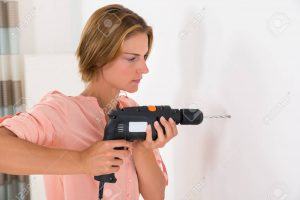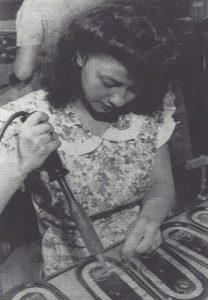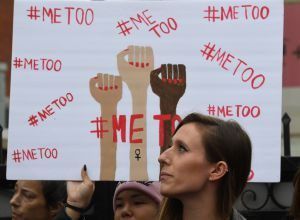by Carol A Westbrook

My father gave me an electric drill and power saw as a wedding gift. The year was 1974, and the other guests at my wedding shower were puzzled, having gifted to me the usual assortment of mixing bowls, Corning ware, linens, and fondue pot. I appreciated all the gifts, but I was delighted with the hand tools, knowing I would get as much use out of them as I would from the hand mixer.

Dad knew I could handle the tools, since he himself had taught me to use them, as he had taught me many other things that were traditionally considered a boys’ domain the 1960’s. He taught me some basic electronics, and together we used copper wire to connect a bell, a battery, and a switch that rang the bell. We made a crystal radio and listened to the world. Dad even taught me how to use a soldering iron. This was ironic because my mother could have taught me, given her experience soldering radios at the Admiral Company during World Was II. But Mom was out of practice, since she no longer worked at Admiral–she quit when the war ended so her job could go to a returning veteran, and because this was men’s work. She felt that her place was in the home.
With these simple projects my Dad taught me to navigate the physical world with as much understanding and confidence as any boy my age.
Another tool my father gave me was a camera, and lessons in how to use it. He showed me how to frame a good shot; how to photograph people and landscapes. He taught me the needed technical skills, too: how to use his light meter, how to set the f-stop, how to choose and load the correct film, and how to develop and print film in our home darkroom. I was a passable photographer in those days before iPhones and digital photography.
Getting photography lessons from my father was a privilege, because Dad was a professional photographer. To me it was like taking painting lessons from Picasso. Dad learned his craft in high school. He never went on to college but worked instead as a freelance photojournalist in the 30’s, and paparazzi photographing celebrities. During the War he worked in Army public relations as a photographer; later, he continued his PR career at the Chicago Board of Education. He was a talented artist.
You can see his art in the eyes of the people he photographed: the weary widows in the bombed-out towns of France, the hungry, tired and frightened soldiers on mess call; the eager pupils at their school desks. On the left is one of his classic WWII photos, “Mail Call.”
Dad’s wartime experience had a tremendous impact on me because that’s when Dad learned the value of a college education, something he never had. All of his colleagues in Army PR were college-educated, and one was even a professor of journalism. They taught him writing composition, public relations, and newspaper layout. He admired these intelligent, intellectual men, and they remained lifelong friends, but he always felt his lack of education. That is why he insisted that his children all continue their education. This attitude was unusual in blue-collar Chicago, but he found the money and the scholarships to send myself, my sister and my brothers to college.
My father had mixed feeling about women’s place in society, but he was single-minded about education. In this he was a dichotomy. He did not want my mother to work outside of the home, but he expected his daughters to be educated and have their own independent careers. I felt the same way, as did many other women of my generation. I went on to college, medical school, and graduate school, in spite of the sexual harassment and discrimination I faced along the way. It is hard to imagine how difficult it was for us in the 60’s to get into college or professional school, or even to learn a trade, or participate in college athletics.
Attitudes toward women’s education were slow to change at first. In the 50’s and 60’s the roles for men and women were so well defined that even primary and secondary education reinforced them. This served to keep women in their place, limiting their career opportunities. For example, my high school offered three tracks for girls: home economics, secretarial, and liberal arts for college prep. If a girl wanted to learn calculus, drafting, mechanical drawing, electrical circuitry, or any other technical skills, she was out of luck. Boys were routinely taught these subjects in their high schools. The technical high schools, where boys learned a trade or prepared for college, were strictly off limits to girls. Lane Technical High School, which my father attended in the 30’s, did not open its doors to girls until 1971. And on the first day of school in ’71, fifteen hundred male students marched downtown to the offices of the Chicago Board of Education to protest, chanting, “We don’t want no broads.”
It is hard to believe that this happened just a generation ago! Ironically, my daughter attended Lane Tech thirty years later, and didn’t have to think twice about it. I am grateful that the young women of today can take their education for granted, and that my persistence contributed. I suspect many women of my generation had supportive fathers backing them, too.
 The women of the #MeToo generation must wonder why their mothers put up with the sexism, male chauvinism and discrimination in the workplace, and why we didn’t fight harder to change this. The fact is that we were fighting just to get those jobs, and to get the education necessary to take a professional position. Yes, we had to first get the jobs, and succeed in them, before we could even discuss pay equality or job harassment. We fought hard to be allowed to do “men’s work, and for the most part we succeeded. Education was a critical part of this
The women of the #MeToo generation must wonder why their mothers put up with the sexism, male chauvinism and discrimination in the workplace, and why we didn’t fight harder to change this. The fact is that we were fighting just to get those jobs, and to get the education necessary to take a professional position. Yes, we had to first get the jobs, and succeed in them, before we could even discuss pay equality or job harassment. We fought hard to be allowed to do “men’s work, and for the most part we succeeded. Education was a critical part of this
Of all the tools that my father gave me, education was the most important.
